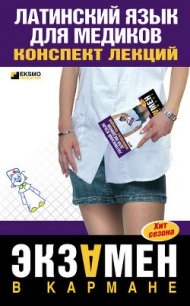Английский язык для медиков - Беликова Елена (читать книги онлайн бесплатно без сокращение бесплатно .TXT) 📗
These muscles fill the intercostal spaces anteriorly from the sternum to the angles of the ribs posteriorly.
Innermost intercostal muscles: the deep layers of the internal intercostal muscles are the innermost intercostal muscles.
Subcostalis portion: Fibers extend from the inner surface of the angle of one rib to the rib that is inferior to it.
Internal thoracic vessels, branches of the subclavian arteries, run anterior to these fibers. Intercostal structures
Intercostal nerves: there are 12 pairs of thoracic nerves, 11 intercostal pairs, and 1 subcostal pair.
Intercostal nerves are the ventral primary rami of thoracic spinal nerves. These nerves supply the skin and musculature of the thoracic and abdominal walls.
Intercostal arteries: there are 12 pairs of posterior and anterior arteries, 11 intercostal pairs, and 1 subcostal pair. Anterior intercostal arteries.
Pairs 1–6 are derived from the internal thoracic arteries.
Pairs 7–9 are derived from the musculophrenic arteries.
Posterior intercostal arteries: the first two pairs arise from the superior intercostal artery, a branch of the costo—cervical trunk of the subcla vian artery.
Nine pairs of intercostal and one pair of subcostal arter ies arise from the thoracic aorta.
Intercostal veins: Anterior branches of the intercostal veins drain to the internal thoracic and musculophrenic veins.
Posterior branches drain to the azygos system of veins.
Lymphatic drainage of intercostal spaces: anterior drainage is to the internal thoracic (parasternal) nodes.
Posterior drainage is to the paraaortic nodes of the po—ste rior mediastinum.
New words
thoracic – грудной
wall – стенка
clavicle – ключица
xiphisternal – грудинный
groove – углубление
intercostal – межреберный
subcostal – подкостный
transversus – поперечный
musculophrenic – мышечный грудобрюшной
paraaortic – парааортальный
mediastinum – средостение
18. Blood. Formed elements of the blood. Erythrocytes and platelets
Blood is considered a modified type of connective tissue. Mesodermal is composed of cells and cell frag ments (erythrocytes, leukocytes, platelets), fibrous proteins (fi—brinogen), and an extracellular fluid and proteins (plasma). It also contains cellular elements of the immune system as well as humoral factors.
The formed elements of the blood include erythrocytes, leukocytes, and platelets.
Erythrocytes, or red blood cells, are important in trans porting oxygen from the lungs to tissues and in returning carbon dioxide to the lungs. Oxygen and carbon dioxide carried in the RBC combine with hemoglobin to form ox—yhemoglobin and carbaminohemoglobin, respectively.
Mature erythrocytes are denucleated, biconcave disks with a diameter of 7–8 mm. The biconcave shape results in a 20–30 % increase in sur face area compared to a sphere.
Erythrocytes have a very large surface area: volume ratio that allows for efficient gas transfer. Erythrocyte membranes are remarkably pliable, enabling the cells to squeeze through the narrowest capillaries. In sickle cell anemia, this plasticity is lost, and the subsequent clogging of capillaries leads to sickle crisis. The normal concentration of erythrocytes in blood is 3,5–5,5 million/mm 3 in women and 4,3–5,9 million/mm 3 in men. The packed volume of blood cells per total volume of known as the he—matocrit. Normal hematocrit values are 46 % for women and 41–53 % for men.
When aging RBCs develop subtle changes, macropha—ges in the bone marrow, spleen, and liver engulf and digest them. The iron is carried by transferring in the blood to certain tissues, where it combines with apoferritin to form ferritin. The heme is catabolized into biliver—din, which is converted to bilirubin. The latter is secreted with bile salts.
Platelets (thromboplastids) are 2–3 mm in diameter.
They are a nuclear, membrane—bound cellular fragments derived by cytoplasmic fragmentation of giant cells, called megakaryocytes, in the bone marrow.
They have a short life span of approximately 10 days.
There are normally 150 000–400 000 platelets per mm3 of blood. Ultrastructurally, platelets contain two portions: a peripheral, light—staining hyalomere that sends out fine cytoplasmic processes, and a central, dark—staining granulomere that con tains mitochondria, vacuoles, glycogen granules, and granules. Platelets seal minute breaks in blood vessels and maintain endothelial integrity by adhering to the damaged vessel in a process known as platelet aggregation. Platelets are able to form a plug at the rupture site of a vessel because their mem brane permits them to agglutinate and adhere to surfaces.
Platelets aggregate to set up the cascade of enzymatic reac tions that convert fibrinogen into the fibrin fibers that make up the clot.
New words
mesodermal – мезодермальный
erythrocytes – эритроциты
platelets – тромбоциты
carbon – углерод
dioxid – диоксид
span – промежуток
light—staining – легкое окрашивание
to aggregate – соединяться
19. Blood. Formed elements of the blood. Leukocytes
Leukocytes, or white blood cells, are primarily with the cellular and humoral defense of the organism foreign materials. Leukocytes are classified as granulocytes (neutrophils, eos—inophils, basophils) and agranulocytes (lympmonocytes).
Granulocytes are named according to the staining properties of their specific granules. Neutrophils sare 10–16 mm in diameter.
They have 3–5 nuclear lobes and contain azurophilic granules (lysosomes), which contain hydrolytic enzymes for bacterial destruction, in their cytoplasm. Neutrophils are phagocytes that are drawn (chemotaxis) to bacterial che—moattractants. They are the primary cells involved in the acute inflammatory response and represent 54–62 % of leukocytes.
Eosinophils: they have a bilobed nucleus and possess acid granulations in their cytoplasm. These granules contain hydrolytic enzymes and peroxidase, which a discharged into phagocytic vacuoles.
Eosinophils are more numerous in the blood during allergic diseases; they norma asent only – 3 % of leukocytes.
Basophils: they possess large spheroid granules, which are basophilic and metachromatic.
Basophils degranulate in certain immune reaction, releasing heparin and histamine into their surroundings. They also release additional vasoactive amines and slow reacting substance of anaphylaxis (SRS—A) consisting of leu—kotrienes LTC4, LTD4, and LTE4. They represent less than 1 % – of leukocytes.
Agranulocytes are named according to their lack of specific granules. Lymphocytes are generally small cells measuring 7—10 mm in diameter and constitute 25–33 % of leukocytes. They con tain circular dark—stained nuclei and scanty clear blue cyto plasm. Circulating lymphocytes enter the blood from the lymphatic tissues. Two principal types of immunocompetent lymphocytes can be identified T lymphocytes and В lymphocytes.
T cells differentiate in the thymus and then circulate in the peripheral blood, where they are the principal effec tors of cell—mediated immunity. They also function as helper and suppressor cells, by modulating the immune response through their effect on В cells, plasma cells, mac—rophages, and other T Cells.
В cells differentiate in bone marrow. Once activated by contact with an antigen, they differentiate into plasma cells, which synthesize antibodies that are secreted into the blood, intercellular fluid, and lymph. В lymphocytes also give rise to memory cells, which differentiate into plas ma cells only after the second exposure to the antigen. Monocytes vary in diameter from 15–18 mm and are the largest of the peripheral blood cells. They constitute 3–7 % of leukocytes.




